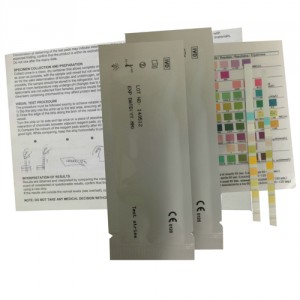The liver is a vital organ in the human body that is responsible for removing toxins from the bloodstream. One of the most common causes of liver damage is excessive alcohol consumption. The good news is that the liver has an amazing ability to regenerate itself, which means that quitting alcohol can help improve liver health.
When a person stops drinking alcohol, their liver is able to focus on repairing the damage caused by alcohol consumption. Over time, the liver cells start to regenerate, and the liver begins to function more efficiently. It can take a few months for the liver to fully heal, but with time, it will likely return to its normal, healthy state.
One of the most significant improvements that occur when a person stops drinking is a reduction in inflammation. Alcohol causes inflammation in the liver, which can lead to serious liver damage over time. When a person stops drinking, the inflammation begins to subside, and the liver can start to heal.
Another benefit of quitting alcohol is a decrease in fat accumulation in the liver. When a person drinks alcohol, the liver converts it into fat, which can accumulate over time and lead to more severe liver damage. By quitting alcohol, the liver can start to break down the accumulated fat, which can help to prevent further damage.
It’s important to note that the amount of time it takes for the liver to heal can vary depending on the severity of the liver damage and how long a person has been drinking. However, quitting alcohol is one of the best things a person can do to improve liver health and minimise the risk of long-term liver damage.
What Are the Common Symptoms of Liver Damage?
When the liver is damaged, it can lead to a wide range of symptoms including:
- Tiredness
- Loss of appetite or nausea
- Abdominal pain or swelling
- Weight loss or weight gain
- Jaundice (yellowing of skin)
- Itchy skin
- Skin rashes
- A fast heartbeat
How Quickly Can Your Liver Repair Itself From Alcohol Damage?
The liver is an amazing organ with the ability to regenerate itself. It can grow back even after being cut in half, although this process does take time and isn’t instantaneous.
The liver is an organ that is responsible for metabolizing alcohol and other toxins in the body. If a person drinks heavily, the liver can experience severe damage. The liver has a remarkable ability to repair itself and regenerate new cells, but it cannot do this if it is constantly being exposed to toxins like alcohol.
The speed at which the liver can repair itself depends on a variety of factors, including how much alcohol was consumed, the person’s age and health status, and whether they have any other diseases or conditions.
In general, it can take anywhere from a few weeks to several months for the liver to fully repair itself from alcohol damage. During this time, it’s important to avoid alcohol and to eat a healthy diet to support the liver’s healing process. It’s also recommended to speak with a healthcare professional for guidance and support during recovery. Continuing to consume alcohol while the liver is trying to repair itself can lead to irreversible damage and even liver failure.
Other Causes Of Liver Problems
Liver cirrhosis is the end stage of liver damage. It can be caused by many factors, such as excessive drinking, viral hepatitis and autoimmune disease. The damage to the liver can be irreversible and will lead to death if not treated. Most people who drink excessively suffer from some type of liver damage but sufferers don’t always develop cirrhosis.
Liver cancer is a term used to describe cancer that starts in the liver. It is the most common type of primary liver cancer and one of the most common types of cancer in general. The first symptom of liver cancer is usually pain in the upper-right part of the abdomen. Other symptoms include weight loss, loss of appetite, nausea and vomiting. The symptoms can be caused by other things as well, so it’s important to see a doctor if you have any concerns or are worried about your health.
Hepatitis C is a viral infection that can cause inflammation in the liver, leading to liver damage and even liver failure. It is usually spread through sharing needles, unprotected sex, or from an infected mother to her baby during childbirth. The symptoms of hepatitis C can range from mild to severe and can include fatigue, joint pain, and jaundice. It is important to get tested if you think you may have been exposed to hepatitis C since early treatment can prevent serious liver damage.
Non-alcoholic fatty liver disease (NAFLD) is a condition where there is a buildup of fat in the liver, which can lead to inflammation and scarring. It is often associated with obesity and can be caused by a poor diet, sedentary lifestyle, or certain medical conditions. NAFLD is a silent disease, meaning it often has no symptoms until significant liver damage has occurred. Treatment involves lifestyle changes, such as losing weight and improving diet and exercise habits.
Drug-induced liver injury (DILI) is a type of liver damage that can be caused by medications or supplements. Some prescription drugs and over-the-counter medications can cause liver damage if taken in high doses or for extended periods of time. Certain herbal supplements and dietary products can also cause liver damage. Symptoms may include nausea, vomiting, abdominal pain, and jaundice. It is important to talk to your doctor about any medications or supplements you are taking to prevent DILI.
What are the UK Guidelines for Alcohol Consumption?
The UK guidelines for alcohol intake are as follows:
- A woman should not regularly drink more than 2 units a day
- A man should not regularly drink more than 3 units a day
Drinking too much alcohol, no matter how little or much, can have dire consequences for your health. It’s important to stay at a healthy level of intake to avoid detrimental effects on your well-being.
Additionally, it is recommended to have at least 2 alcohol-free days per week to give your body time to recover. It is also important to note that the guidelines are not a target to aim for, but rather a limit not to exceed. Some people may be more sensitive to alcohol and should therefore consume less or avoid it altogether. Pregnant women are advised not to drink alcohol at all, as it can harm the developing baby. It is also illegal for those under the age of 18 to purchase or consume alcohol in the UK.
How Can You Test the Health of Your Liver?
There are many ways to test the health of your liver. One way is through a blood test. Another way is through a physical exam or by listening to your heart with a stethoscope. You can also ask your doctor for other tests if they feel you need one. Many people won’t even notice any symptoms from their liver disease until 75% of the liver is damaged.
How Does A Home Liver Test Work?
A home liver test will check for Bilirubin and Urobilinogen in your urine.
Bilirubin is a yellow pigment that is made by the normal breakdown of red blood cells. It can be measured in a blood test or a home health liver test. Urobilinogen is a chemical that is made when red blood cells are broken down in the intestines or by bacteria living there.
A home liver test is simple to perform. Just pee into a container and lower the test strip into your urine sample. Within 30-60 seconds, results will start to appear on the strip. Each test comes with a colour chart which allows you to check your results against it. You can then decide if you need to see a doctor.
It is important to note that a home liver test is not a substitute for a professional medical diagnosis. If you are experiencing symptoms of liver disease or have concerns about your liver health, it is important to consult with a healthcare provider. A home liver test can serve as a helpful tool for monitoring your liver function over time, but it should be used in conjunction with regular medical check-ups and liver function tests.
Photo by Adam Jaime on Unsplash
Zoom Health is a leading UK supplier of Home Health Tests and Earplugs
This post was originally published in 2022. It was last updated in June 2023.






